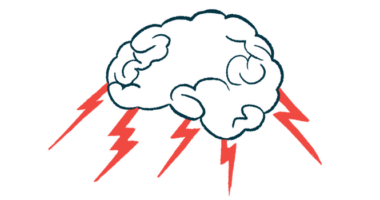Brain damage patterns differ in patients with, without RBD: Study
Scientists think damage to locus coeruleus may be marker of sleep disorder

Patterns of brain damage in Parkinson’s disease differ based on whether or not individuals have REM sleep behavior disorder (RBD), a new study suggests.
Study findings indicate that patterns of brain damage are similar among Parkinson’s patients who develop RBD before or after Parkinson’s motor symptoms. Based on the results, scientists think that damage to a certain brain region called the locus coeruleus may be a marker of RBD in Parkinson’s.
The study, “Presence but not the timing of onset of REM sleep behavior disorder distinguishes evolution patterns in Parkinson’s disease,” was published in Neurobiology of Disease.
RBD is a condition in which a person physically acts out their dreams, often with vivid and violent movements. RBD is a well-established risk factor for Parkinson’s disease — around half of people who develop RBD will develop Parkinson’s motor symptoms within the next decade. Conversely, some people with Parkinson’s don’t develop RBD until after the onset of motor symptoms, and other Parkinson’s patients don’t ever experience RBD.
It’s not clear why RBD affects some Parkinson’s patients but not others, or why the timing of RBD relative to motor symptoms can vary. One proposed explanation is that patterns of brain damage may differ. The general idea is that people who develop RBD before motor symptoms may have earlier damage in certain brain regions, whereas other areas of the brain might be affected earlier in patients who develop motor symptoms before RBD.
Here a team of scientists in China conducted an analysis of brain MRI scans to test this idea. The analysis included data on 156 people with Parkinson’s: 50 who developed RBD before motor symptoms, 31 who developed motor symptoms before RBD, and 75 who did not have RBD. The analysis also included data on 16 people with RBD who did not have symptoms of Parkinson’s, as well as 78 people with no known disease for comparison.
Event-based model used in evaluating patterns of brain damage
To evaluate patterns of brain damage, the researchers used an analytical technique called an event-based model. In simplest terms, the idea behind this model is that types of damage that are most common also tend to occur earliest.
Results showed patterns of brain damage were similar in patients who developed RBD then motor symptoms as compared to those who developed motor symptoms then RBD. In both groups, data suggested that the earliest brain damage occurred in a region called the substantia nigra, then progressed to another region known as the locus coeruleus. Patients who had RBD without motor symptoms generally showed signs consistent with this pattern also.
However, Parkinson’s patients who did not have RBD showed a different pattern: in these patients, damage would start in the substantia nigra, but then another region called the parahippocampal gyrus would become damaged, while the locus coeruleus showed comparatively little damage.
Collectively, these results suggest that brain damage patterns help determine whether or not a patient will develop RBD, but don’t influence the timing of RBD relative to motor symptoms.
“These results characterize neurological structural alterations in the progression of [Parkinson’s], and provide a better understanding of the region-specific involvement of [Parkinson’s] pathology,” the researchers concluded.
Based on these findings, the researchers proposed damage to the locus coeruleus could be a useful marker to distinguish between Parkinson’s patients who will or will not develop RBD as part of their disease. They stressed that additional research will be needed to validate this idea.







